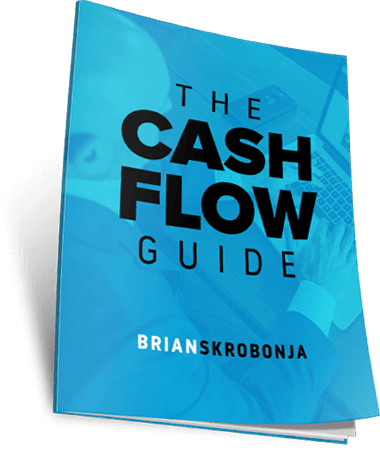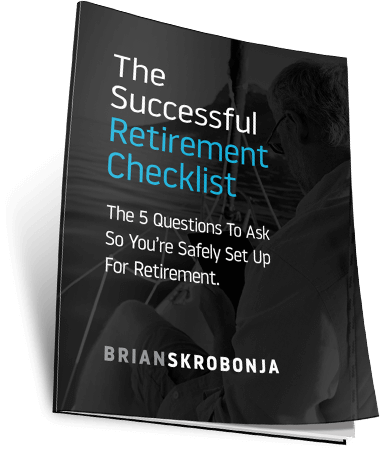Managing investment risk can be like being at an amusement park where they have a bridge, with a spinning drum surrounding the bridge. The drum has an optical illusion printed onto it and it is illuminated with a black light. You cannot see the actual bridge you are walking across, because it is pitch black, and the illusion of the spinning drum has you so disoriented that it is difficult to even walk. I have been on such a bridge, and let me tell you, it is a very insecure feeling. To say I inched my way across would be an understatement. I moved slowly along the bridge, gripping the railing firmly as I made my way across to the other side. Even though I knew what was going on, and I could see the end of the tunnel twenty feet away, I was still uncomfortable and anxious to get out of the tunnel.
The stock market can be a similar experience. Like they were navigating a twirling tunnel, many people can be left feeling disoriented and confused about their investments. After all, no one can predict the future of the stock market, and there is no guarantee against loss. Simply put, inherent in the stock market is the risk of losing money! So it is understandable that people have some level of uncertainty about their portfolio. The key to overcoming some of the anxiety associated with investing is managing risks and preventing them from paralyzing your decision-making process.
There is some level of risk associated with nearly everything we do. Driving, for instance, carries risk. You could hit someone with your vehicle, or someone could hit you, causing damage to both vehicles. So what is our process for handling the financial risk of driving?
- We accept the risk that if we are in an auto accident and our car is totaled, we will buy a new car. We understand the odds are high for a safe arrival at our destination without the need to worry about an accident.
- We can manage the risk by driving defensively, with our hands on the steering wheel at ten and two, while keeping one foot on the brake. Staying highly alert while driving, without the radio or cell phone to distract us, perhaps lowers our risk of an accident.
- We can purchase auto insurance and pass the financial risk onto the insurance company. Most drivers cover their risk by purchasing insurance, which transfers the risk away from the driver and onto the insurance company. If we are in an accident, we make a call to our insurance agent, and the rest is on them to get the vehicle back to new.
- We could avoid the risk altogether and not drive. There are public transportation and other options for getting from one place to another, and thus we can avoid risk altogether.
So how do we apply this to investing? The fact is that investing in the stock market can make us money; otherwise, we would not do it. However, just as with driving, there is a risk when investing. We can lose money as a result of a market downturn. We can lose money from government actions. We can lose money from a news headline. There are risks all around the market. So what is our process for handling the financial risk?
- We can simply accept the risk that if money is lost, we will move on and find another investment. The acceptance of risk goes hand in hand in terms of investing. You put your money into the market with the hope of outpacing inflation and compounding your earnings for future use. Meanwhile, it is essential to understand that market conditions could diminish your anticipated investment. We can look at history and see that while history does not guarantee future results, it does provide insight into past performance and trends. That gives us the knowledge and understanding of what could happen as a result of making an investment. In other words, we can anticipate growth, but we really do not know what the actual outcome will be.
- We can manage the risk through asset allocation and diversification. There are investments that make money if an investment goes up, while there are other investments that make money if an investment goes down. At the same time, there are investments that historically perform well when another investment performs poorly. Having a mix of investments that cover many different markets can help to soften the ups and downs.
- We can ensure our risk by passing it onto to an insurance company, just as we would the risk associated with our automobiles. Banks and insurance companies offer programs that allow you to pass the risk of a market loss onto them, for a fee of course.
- We can avoid the risk altogether and simply not invest. This approach eliminates market risk by avoiding the direct influence of the markets. By sticking with CDs or fixed annuity accounts, we avoid the risk inherent in the market. It is important to note that although we can avoid the market risks, we remain exposed to inflation risk. (Inflation risk is the potential erosion of earning potential over time.)
As you can see, there are different ways to manage risk, and depending on your personality, your investment experience, your belief system about money and your phase of life, you will need to determine for yourself which approach makes the most sense for you.
The most crucial step is that you must first identify why you are investing. If you fall into the trap of making a decision based on what sounds good, you run the risk of being sold a product without a full understanding of how it ties into your ultimate purpose for the investment.
It is important to keep in mind when you are investing that picking an investment is not the same as financial planning. I have said it before, and I believe it is worth saying again—anyone can invest in the market. You can go online or to a neighborhood brokerage company to buy an investment like you would buy a pair of shoes. It’s easy, convenient and can even be cheaper than working with an actual financial advisor. If you have the knowledge and confidence to do it on your own, I say go for it.
However, if you have questions about what investments to choose or are unsure of exactly what it means to distribute your money, let me know. I receive a lot of money related questions and do my best to answer questions within 24 hours or so.
Good Luck!
Brian
A policy change may incur fees and costs, and may also require a medical examination.
The article and opinions in this publication are for general information only and are not intended to provide specific advice or recommendations for any individual. We suggest that you consult your accountant, tax, or legal advisor with regard to your individual situation. Kalos Capital, Inc. does not provide tax or legal advice. The opinions and views expressed here are for informational purposes only. Please consult with your tax and/or legal advisor for such guidance.







